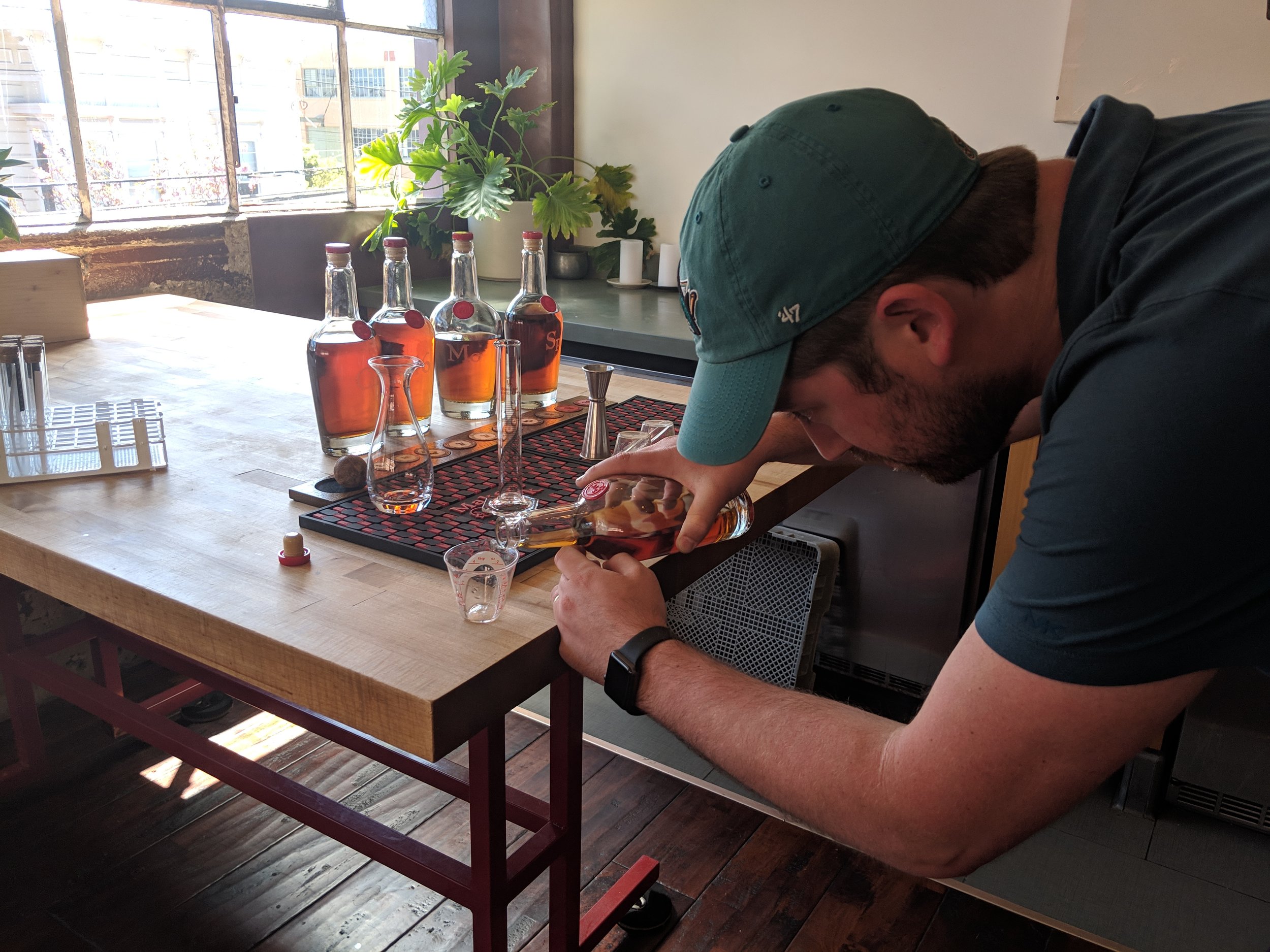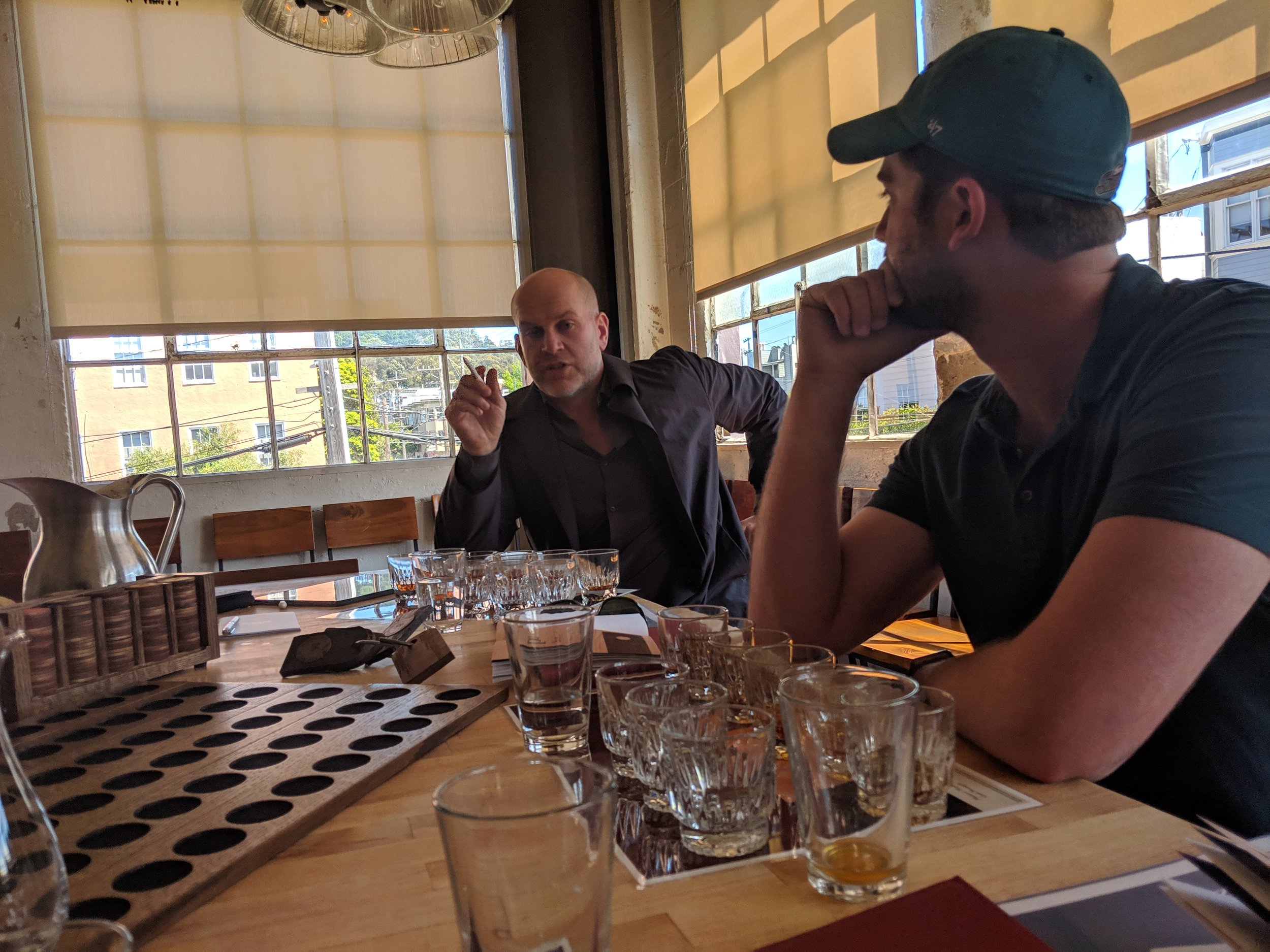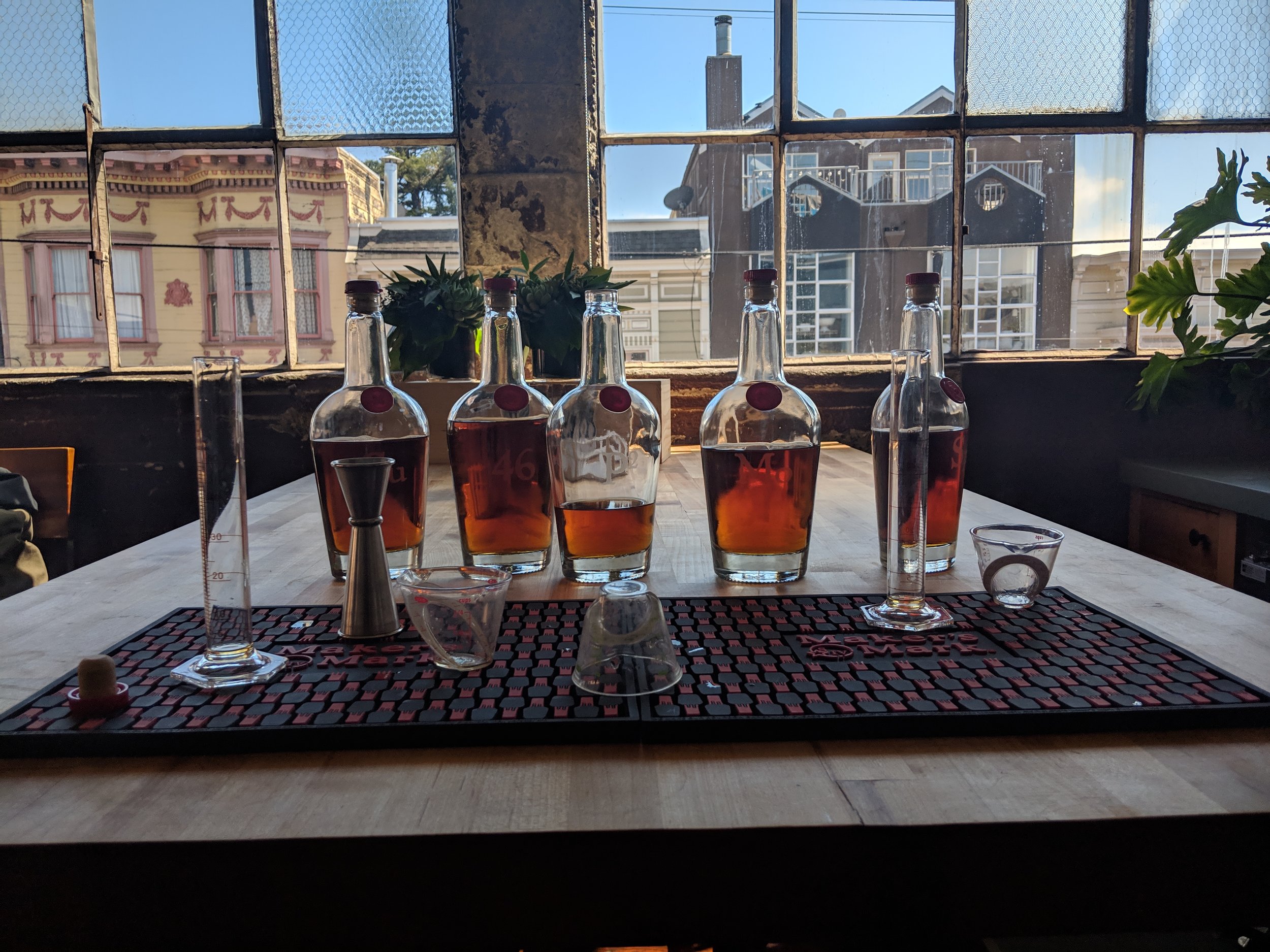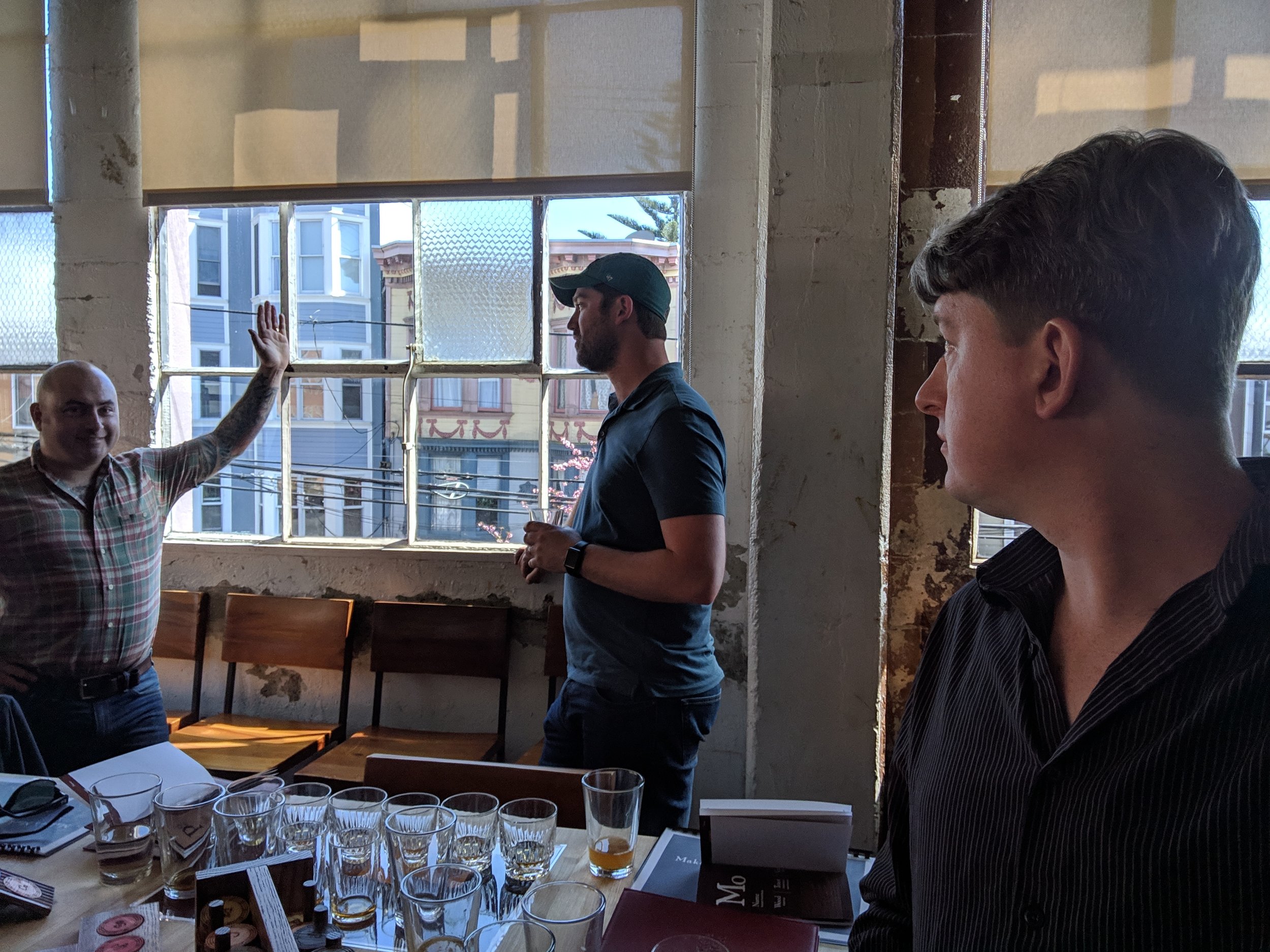Making the Mark
Blending whisky/whiskey is a skill and an art. I’ve known this since I first appreciated a glass of whiskey with my father, and my gratitude to the unsung hero that is The Blender has only grown the more I’ve learned about brown spirits. Blended Scotch has been overlooked for the past couple decades by many who consider themselves connoisseurs and only want to drink single malts. But think about the prowess it takes to combine several bold single malts from all over Scotland along with delicate and still nuanced single grain whiskies to create a blend that really sings. Can anyone say Compass Box? And what about those big American whiskey brands who some turn their noses up at because they aren’t considered “craft” distillers? Is there really no craft involved when a distillery such as Buffalo Trace can pump out 10 million liters of whiskey a year of various recipes and manage to turn out a reliably consistent and delicious product? I would say there is absolutely a craft, a talent, and a beauty to these various types of whisky blending.
Of course, I’ve been preaching on this soapbox for years, but never have I understood or respected the skill of blending quite so much until this April when K&L Spirits Buyer Andrew Whiteley invited me up to San Francisco to meet with some blending experts from Maker’s Mark. As Andrew and I headed north on Highway 101 I didn’t quite know what the plan was or what I was getting into. I knew I was going to sample some whiskey and undoubtedly have a good time. But I definitely didn't know that I would walk away from the experience with a deeper appreciation for several aspects of the whiskey-making process. We also walked away with two new K&L exclusive recipes, but I’m jumping ahead of myself.
Andrew and I went to a bar called Trick Dog where we met with Andrew Marks, a Maker’s Mark Diplomat, and Johnnie Mundell, Maker’s Mark’s Heritage Manager. After some pleasant hellos, we dove deep into the Maker’s Mark philosophy on bourbon and then got a crash course in what it takes to create their intriguing Maker’s Mark Private Select batches. Maker’s Mark changed up the bourbon game when Bill Samuels Jr. put extra wood staves in some barrels of maturing whiskey to emphasize certain flavors of the Maker’s Mark profile he really loved. This extra wood contact was not a shortcut in an attempt to make the bourbon seem older; instead, it brought out certain aromas, tastes, and textures that made Maker’s Mark 46 a more robust version of the Maker’s that so many people already appreciated.
Maker’s Mark Private Select takes that philosophy a step (or several steps) further, letting the distillery and a few lucky private retailers to customize their own distinct and powerful Maker’s Mark concoctions. While Maker’s 46 inserts ten virgin French oak staves into the aging barrels, the Private Select program allows five different stave types to be added. Without getting into the nitty-gritty of all the rules, with the five stave possibilities and ten total staves being added overall, Maker’s Mark Private Select has 1,001 combinations. It’s hard to overstate the customization this allows. It’s not infinite, but the program is extraordinarily versatile in allowing for so many combinations of staves and resulting bourbon profiles.
With 1,001 potential combos ahead of us, Andrew and I had a lot of work to do. Of course we didn’t try to go through all the possibilities, but what we had set before us that afternoon was a scaled-down version of the task that blenders face at the distillery. We had samples of bourbon aged on each of the stave types that we tasted and contemplated how to combine. The stave options Maker’s Mark offers are P2 (a baked American oak), Cu (seared French oak cut with ridges to expand surface area), 46 (the French oak stave type originally used for Maker’s 46), Mo (or “Mocha” is a high roasted French oak), and Sp (French oak toasted at various temperatures to impart its own unique spicy flavor profile). Andrew and I carefully nosed, sipped, and noted each whiskey’s profile. We completely nerded out as we discussed the different aromas and flavors of each stave-aged Bourbon.
Andrew and I were surprised how each stave-aged whiskey was so different from the others, yet they all still tasted distinctly like Maker’s Mark. We talked about which ones we enjoyed most and for what reasons, which is a conversation Andrew and I have regularly when sampling spirits for K&L. But then we had to have the more complicated discussion of how we might combine these unique spirits. We wanted to highlight the flavors we each found enjoyable, while also crafting something balanced with depth of character.
Naturally, we argued, we laughed, and then we got mixing. Johnnie and Andy from Maker’s Mark set us up with wood pieces that looked like poker chips representing all the stave types so we could begin planning our blends. Then we played junior scientist with beakers, graduated cylinders, and measuring cups so that we could accurately create the blending proportions we mapped out with the poker chips. After carefully mixing, everyone - including the folks from Maker’s Mark - sat down to taste and discuss. We were happy with the results, but at the same time we wanted to keep going. We both needed to try new combinations to bring out different flavors. We had to keep mixing.
What blew me away about this process was just how different the results could be from one blend to the next. When Andrew and I went back to mixing a new recipe, we never tried to start something completely different from scratch. Rather, each time we attempted to fine-tune the recipe we made previously. Even though we only wanted to tweak the recipe to bring out certain aromatics and flavor notes, both of us were amazed with how different each of our our micro-batches turned out. Changing just one stave type out of ten in the recipe had dramatic impacts on the resulting whiskey. That’s when the light bulb flashed in our heads and where we really grew our appreciation for the role that blending plays in our whiskey consumption. It was a revelation.
After every round of blending, all of us sipped and discussed what we liked best about each of the batches and what we thought could be changed. And at the end of a very fun afternoon, we came to a unanimous conclusion on which of the blends were the best. After all was said and done, we picked one of Andrew’s recipes and one of mine that we wanted bottled. The two batches are so different, yet they’re so Maker’s. They fit distinctly into what Andrew and I were each craving from a bourbon that afternoon, but they’re both delicious whiskeys that I’m excited to drink again. Thankfully, we’re getting both of these amazing custom blends bottled exclusively for K&L and they should be available by the end of the summer. Of course, mine’s a little better than Andrew’s—but you might need to get a bottle of each to make your own decision. More than that, you should try each bottling so that you can see for yourself how a blender starting with just a handful of barrels from a single distillery can create small batches of whiskey that can be so very distinct and so pleasurable at the same time.
—Neal Fischer







